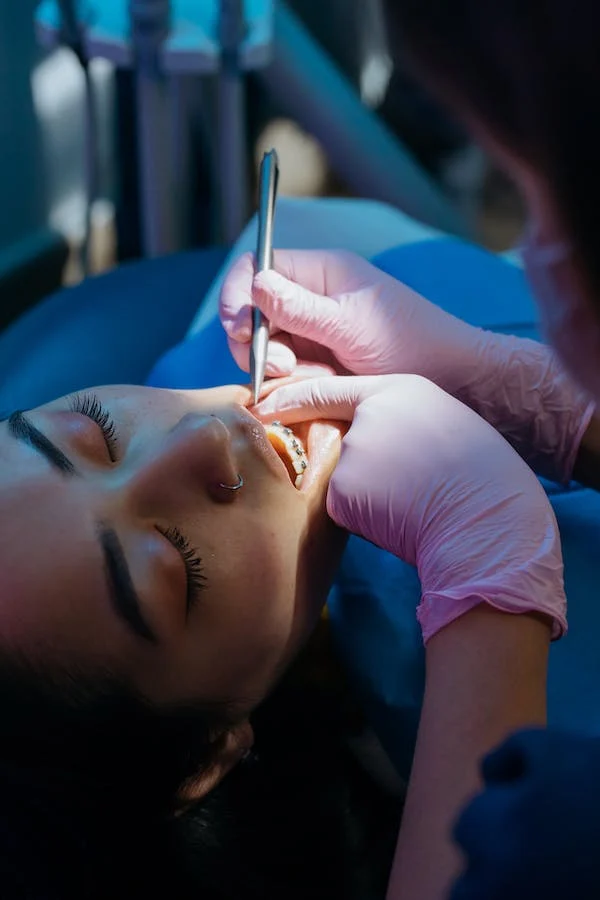Getting My Legacy Orthodontics To Work
Getting My Legacy Orthodontics To Work
Blog Article
9 Easy Facts About Legacy Orthodontics Shown
Table of ContentsSome Known Details About Legacy Orthodontics See This Report on Legacy OrthodonticsThe Buzz on Legacy OrthodonticsHow Legacy Orthodontics can Save You Time, Stress, and Money.Get This Report about Legacy Orthodontics
In enhancement, we provide adjustable treatment schedules, versatile repayment options and an enjoyable, enjoyable experience.An orthodontist is a dental practitioner educated to diagnose, avoid, and treat teeth and jaw abnormalities. They remedy existing problems and are educated to identify troubles that may create in the future. Orthodontists deal with people of every ages, from children to grownups. Individuals usually connect a perfect smile with excellent health and wellness.
Malocclusion, or misaligned teeth, can cause oral issues, consisting of tooth decay, gum tissue illness, and hard or agonizing chewing. Not everyone is birthed with straight teeth. If you have a negative bite or big spaces in between your teeth, you may wish to get in touch with a dental practitioner specializing in orthodontic care.
How Legacy Orthodontics can Save You Time, Stress, and Money.
( Photo Credit Score: DigitalVision/Getty Images) Orthodontists use taken care of and detachable dental gadgets, like braces, retainers, and bands, to transform the position of teeth in your mouth. Orthodontic therapy is for oral irregularities, consisting of: Jagged teethBite troubles, like an overbite or an underbiteCrowded teeth or teeth that are as well much apartJaw misalignmentThe goal of orthodontic treatment is to improve your bite.
While you might believe of orthodontists as primarily for youngsters or teens that need braces, they can fix dental issues at any type of age. Orthodontists go to college, oral college, and orthodontic college.
All orthodontists are dental practitioners, but not all dental professionals are orthodontists. Orthodontic residency programs use extensive, focused direction for oral professionals. They concentrate on 2 areas: How to effectively and safely move teeth How to properly guide growth in the teeth, jaw, and faceOnce an orthodontist has actually finished training, they have the alternative to become board licensed.
Getting My Legacy Orthodontics To Work
Malocclusion leads to tooth congestion, a misshapen jaw, or uneven bite patterns. Malocclusion is usually treated with: Your orthodontist connects steel, ceramic, or plastic square bonds to your teeth.
Some individuals require a headwear to help relocate teeth right into line with pressure from outside the mouth. A retainer is a custom device that maintains your teeth in place.
They're usually made use of on children. They can produce additional room in the mouth without having to pull teeth. If you have a severe underbite or overbite, you could need orthognathic surgery (likewise called orthodontic surgical procedure) to lengthen or shorten your jaw. Orthodontists use cords, surgical screws, or plates to support your jaw bone.
You may need to see an orthodontist if you have: Crowding or not adequate room for all of your teethOverbite, when your upper teeth come over your base teethUnderbite, when your bottom teeth are as well much forwardSpacing or concerns with gapsCrossbite, which is when your top teeth fit behind your base teeth when your mouth is closedOpen bite or a vertical void in between your front base and top teethMisplaced midline, when the center of your bottom and upper teeth don't line up Correcting a dental malocclusion can: Make biting, chewing, and speaking easierImprove the symmetry of our face and your general appearanceEase discomfort from temporomandibular joint conditionsDifferent your teeth and make them easier to clean up, aiding protect against dental caries or tooth cavities It's usually a dental expert that first notices misaligned teeth during a routine examination.
The Ultimate Guide To Legacy Orthodontics

During your very first orthodontic consultation, you'll likely have: An oral examPhotos taken of your face and smileDental X-raysPanoramic (360 level) X-rays of your face and headImpressions to produce molds of your teethThese tests will certainly assist your orthodontist understand just how to continue with your therapy. braces. An orthodontist is a dental professional that's had training to treat your teeth and jaw
Orthodontists may do surgery, exams,X-rays,and more to aid you attain a much more comfy, healthier smile. An orthodontist is concentrated on your bite, so something like a damaged tooth would certainly be handled by a dental expert. Orthodontists are dental professionals but not all dental professionals are orthodontists. Orthodontists are concentrated on your bite, or the means your teeth fit together, and the straightness of your teeth.
Ever asked yourself how stars always seem to have flawlessly straightened teeth? Orthodontists are dental professionals who concentrate on fixing abnormalities in the teeth and jaws.
Legacy Orthodontics Fundamentals Explained

While braces are one of the most generally recognized orthodontic treatment, orthodontists have a varied toolkit at their disposal. The specific method selected relies on the severity of the case, the individual's age, and individual preferences. These reliable braces use a system of braces bonded to the teeth and attached by cords.
These removable trays are personalized to progressively move the teeth's position. In instances of slim jaws, palatal expanders can be made use of to create space for correct tooth placement.
Report this page